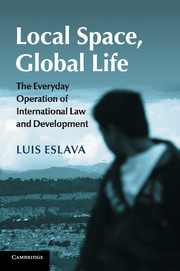Book contents
1 - Introduction
Published online by Cambridge University Press: 05 August 2015
Summary
On an international flight to Colombia in mid 2009, I came across a map of Bogotá in the inflight magazine. Amongst commercial publicity and articles about Colombia's tourist attractions, the map stood out. It occupied two colour pages, and it depicted a series of new residential projects being built in the city by a transnational construction company. Although it portrayed Bogotá's cartography in a cartoonish manner and seemed only to serve a commercial purpose, I was struck by how closely the map's view of the city mirrored the form in which local administrations have been attempting to shape the human and physical spatiality of Bogotá since the early 1990s, when the city embarked upon a massive process of urban renewal that has gained wide international recognition. Since this time, when Colombia as a whole embraced an international trend for the decentralization of development efforts in the Third World, a series of proactive mayors in Bogotá has engaged in rebuilding a city that overcomes Colombia's image as an ‘underdeveloped’ and ‘failed state’. Through norms, policies and administrative and physical interventions, local administrations have been attempting to marry global ideals of social and economic development with a tight control over the cartography of Bogotá. Their aim has been to create a city that is sustainable in human and financial terms; an attractive locality well defined by its jurisdictional frontiers and surrounded by a green belt; a city that is competitive and well connected thanks to a state-of-the-art public transport system, an improved network of roads and new airport facilities. The map thus offered a representation of Bogotá in its best possible light: as a harmonious, ordered, internationally appealing, sustainable and evenly developed local jurisdiction that exists beyond contradictions. A city ready to be consumed by the passengers on my flight (see Figure 1.1).
Looking at the map from the air, Bogotá was presented for the transnational observer as a graspable and neat unit which could be compared to other cities of a cosmopolitan world – a world that tries to escape from its memories of hard borders, national parochialisms and stagnant state regulations: a true international world. The very fact of looking while flying – while crossing lands so rapidly and smoothly – helped to lubricate this act of observing the city as a free place: a destination within a global circuit of economic and cultural flows.
- Type
- Chapter
- Information
- Local Space, Global LifeThe Everyday Operation of International Law and Development, pp. 1 - 55Publisher: Cambridge University PressPrint publication year: 2015



